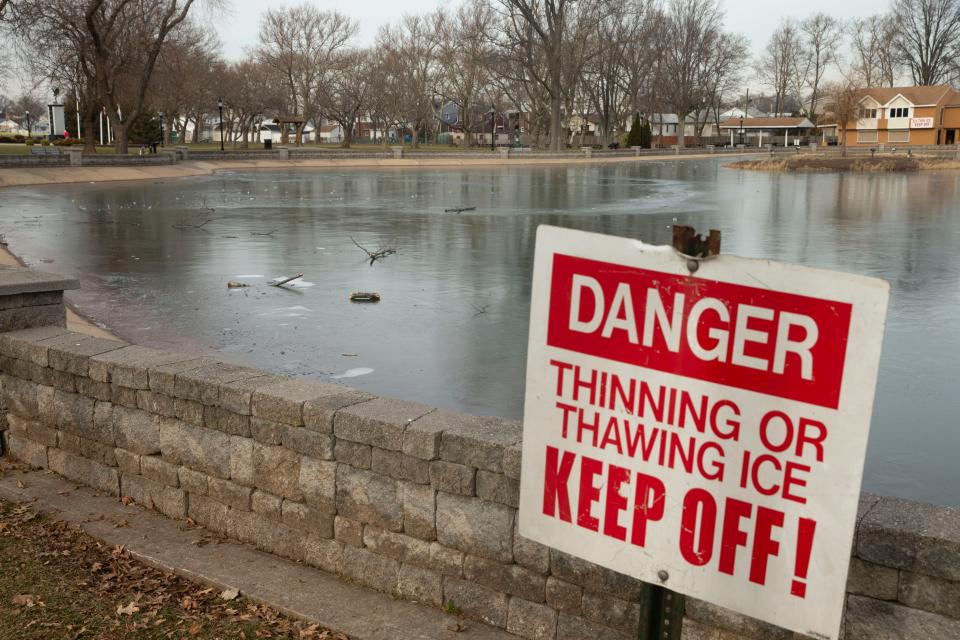'Thick and blue, tried and true.' How to tell if lake ice is safe to walk on
Thick and blue, tried and true. Thin and crispy, way too risky.
Uncertain if the ice atop a body of water is solid enough to walk upon? The little ditty above could serve as your guide. And perhaps prevent disaster.
Last Sunday, two young teenagers chased a basketball onto the ice at Lake Afton in Yardley. The ice collapsed and the boys fell into the icy water. Fortunately, a 16-year-old Neshaminy High School hockey player, Cory Hemberger, was nearby. He skated toward them, extended his hockey stick, and pulled them to safety.
The youngster chased after the ball without considering if the ice surface would support them.

Even during winter, when it may appear the surface of the body of water is frozen, a closer look is the wise decision.
A combination of factors can assist in learning if ice is thick enough to withstand weight: observing its color, testing its thickness, and being aware of external factors such as temperature, local conditions and local knowledge.
Short of posted signs warning of thin ice, one’s eyes may be the best gauge whether to venture out or stay away. Cracks, breaks, holes, weak spots or abnormal surfaces are indicators the ice is not suitable to walk on. Other signs of danger are flowing water near or at the edges of the ice, and ice that appears to have thawed and refrozen.
After about 2-to-3 weeks of freezing temperatures, a solid sheet of ice will begin to form on your pond or lake.
But low temps aren't the only thing that influence ice formation. Water currents, wind, and snow coverage will also make a difference in the integrity of the frozen surface. So once the weather and temperatures stabilize after several weeks, you can venture onto the ice and inspect its thickness.
Ice is not considered safe to walk on until it is at least four inches thick. At that thickness, it is suitable for ice fishing, cross country skiing, and walking, and can support about 200 pounds. At five inches, it should be enough to hold a single snowmobile or ATV or about 800 pounds.
Short of notification by local agencies that monitor the body of water, let your eyes be your guide.
This article originally appeared on Bucks County Courier Times: 'Thick and blue, tried and true.' When is lake ice is safe to walk on?

